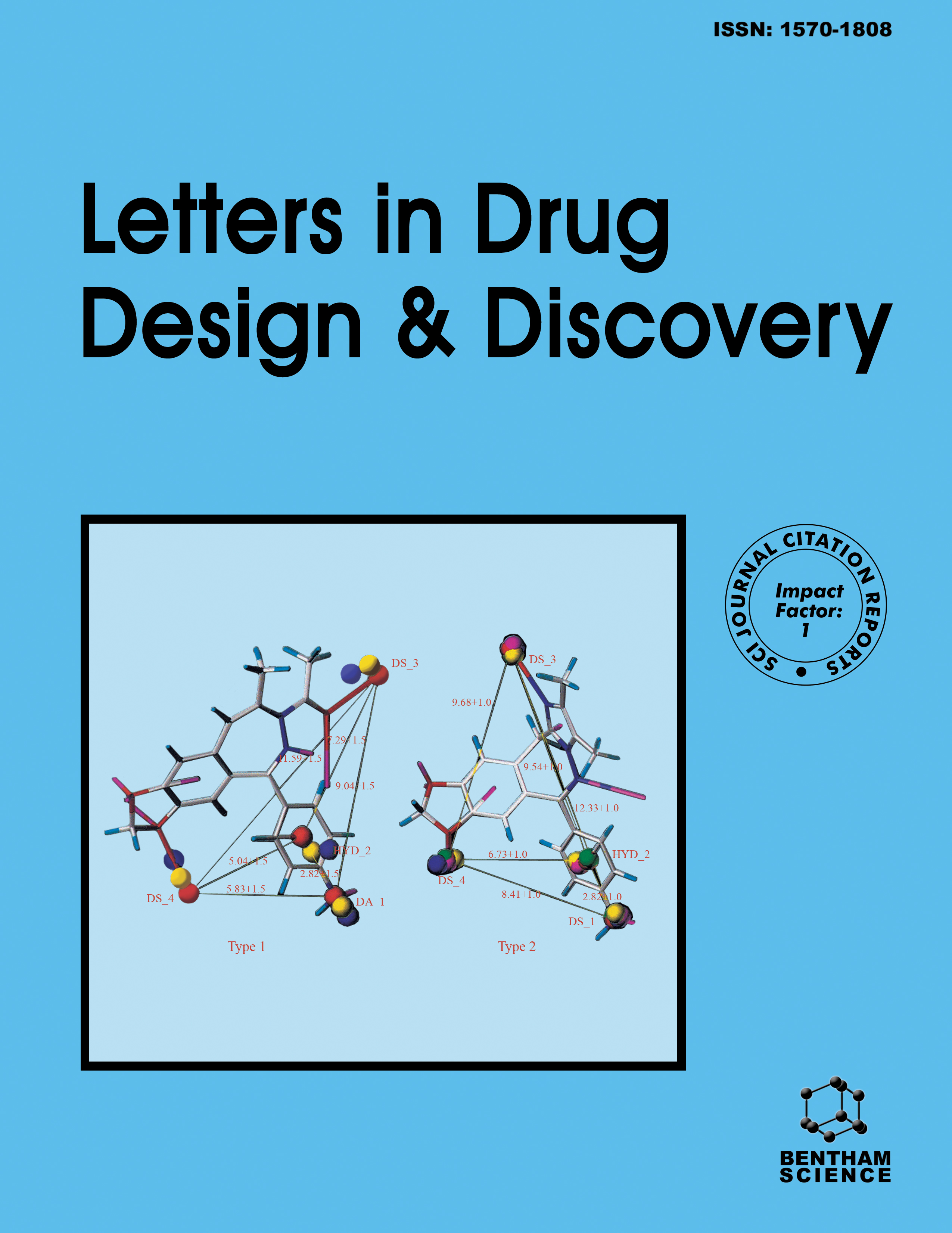-
s A Series of Furan-based Hydrazones: Design, Synthesis, and Evaluation of Antimicrobial Activity, Cytotoxicity and Genotoxicity
- Source: Letters in Drug Design & Discovery, Volume 17, Issue 3, Mar 2020, p. 312 - 322
-
- 01 Mar 2020
Abstract
Background: Hydrazones, frequently occurring motifs in many bioactive molecules, have attracted a great deal of interest as potent antimicrobial agents. Objective: The aim of this work was to design and synthesize new hydrazone-based antimicrobial agents. Methods: 4-[2-((5-Arylfuran-2-yl)methylene)hydrazinyl]benzonitrile derivatives (1-10) were obtained via the reaction of 4-cyanophenylhydrazine hydrochloride with 5-arylfurfurals. Compounds 1-10 were evaluated for their antimicrobial effects using a broth microdilution method. Their cytotoxic effects on NIH/3T3 mouse embryonic fibroblast cell line were determined using XTT assay. The most effective antimicrobial agents were investigated for their genotoxic effects using Ames MPF assay. In silico docking and Absorption, Distribution, Metabolism and Excretion (ADME) studies were also performed using Schrödinger’s Maestro molecular modeling package. Results: The antifungal effects of the compounds were more significant than their antibacterial effects. Compound 5 bearing 3-nitrophenyl moiety was the most potent antifungal agent against Candida albicans, Trichoderma harzianum and Fusarium species, whereas compound 10 bearing 4- chloro-2-nitrophenyl moiety was the most effective antifungal agent on Aspergillus ochraceus. According to XTT and Ames MPF assays, these compounds were neither cytotoxic nor genotoxic at the concentrations tested. Docking studies suggested that these compounds showed good affinity to the active site of lanosterol 14α-demethylase (CYP51) (PDB code: 5V5Z) and interacted with the key residues such as Hem601 and Cys470. Based on in silico ADME studies, the compounds are expected to have high oral bioavailability. Conclusion: According to the in vitro and in silico studies, compounds 5 and 10 stand out as potential orally bioavailable antifungal agents for further studies.


